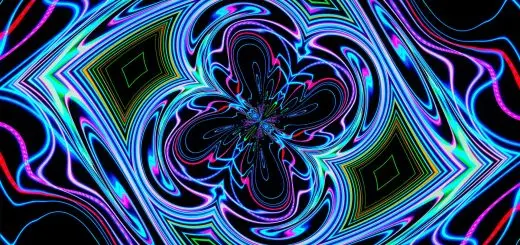Midgard: The Realm of Humans in Norse Myth

Looking for more amazing products? Check out our online store and explore our collection here! Happy shopping!
Before diving in, please note: This post is for informational purposes only. If you’d like to know more about how we approach topics, feel free to check out our friendly Disclaimer Page.
Hey there, amazing readers! 
We’re committed to delivering quality posts, and your support (even just sticking around despite the ads) means everything to us. So, bear with us, and thanks for helping us keep the good vibes rolling. Now, on to the fun stuff!
TRANSLATE BUTTON AT THE END OF THE ARTICLE
Introduction: Midgard in Norse Mythology
Midgard, also known as the "Middle Earth" or the "Realm of Humans," occupies a central position in Norse mythology.
It is a realm inhabited by humans and serves as a bridge between the world of gods and the chaotic realms of giants and monsters.
In Norse cosmology, Midgard lies at the center of the Nine Worlds, suspended between the realms of gods and the primordial chaos of Ginnungagap.
This article aims to explore the origins, geography, significance, and the role of Midgard in Norse mythology.
Origins and Creation of Midgard
According to Norse mythology, Midgard was created by the gods Odin, Vili, and Ve.
These three deities took part in the slaying of the primordial giant Ymir, and from his body, they crafted the world.
From Ymir’s flesh, they created the earth, and from his bones, they shaped mountains and hills.
To encircle and protect Midgard, they used Ymir’s eyebrows to create a giant fortification known as Midgard’s Wall.
This wall served as a barrier between the humans of Midgard and the chaos and monsters of the outer realms.
Description: Midgard as the Realm of Humans
Midgard is often depicted as a vast and fertile land, abundant with forests, rivers, and diverse landscapes.
Norse mythology portrays it as a world teeming with life, inhabited by humans who occupy a unique position between gods and creatures of chaos.
It is within Midgard that humans live, thrive, and face the challenges and adversities that shape their existence.
The Geography and Landscape of Midgard
Midgard is described as a land of vast expanses, stretching from the great ocean that surrounds it to the towering mountains in the distance.
Its geography is characterized by diverse landscapes, including forests, plains, valleys, and rivers.
The land is dotted with numerous human settlements, from small villages to mighty cities.
Midgard’s geography plays a significant role in shaping the experiences and adventures of its human inhabitants.
Midgard: The Meeting Point of Gods and Humans
Midgard serves as a meeting point between gods and humans, allowing for interactions and exchanges between these two realms.
The gods frequently visit Midgard, often taking on disguises to walk among humans and observe their actions and deeds.
This interaction between gods and humans in Midgard forms the basis for many tales and legends in Norse mythology, highlighting the importance of human actions and their impact on the divine order.
Midgard: Home to the Mighty World Serpent
One of the most fascinating aspects of Midgard is its association with the fearsome World Serpent, also known as Jormungandr.
According to Norse mythology, Odin cast the serpent into the sea that surrounds Midgard, where it grew to enormous size, encircling the realm with its massive body.
Jormungandr’s presence in Midgard serves as a constant reminder of the delicate balance between order and chaos, as well as the inherent dangers that lurk just beyond the realm of humans.
Midgard: The Realm Protected by Thor
As the realm of humans, Midgard is under the protection of Thor, the mighty god of thunder.
Thor is depicted as the defender of Midgard, fiercely guarding it against the threats of giants, monsters, and other forces of chaos.
His immense strength and mighty hammer, Mjolnir, make him the ideal protector of humans, ensuring their safety and preserving the balance between the realms.
Midgard: The Realm of Destiny and Fate
In Norse mythology, Midgard is closely tied to the concepts of destiny and fate.
It is believed that the Norns, the three female beings who govern the destinies of gods and humans, have a particular interest in Midgard.
The Norns shape the fate of individuals and influence the course of events in Midgard, underscoring the significance of human actions and choices in the grand tapestry of Norse mythology.
The Role of Humans in Midgard
Humans occupy a central role in Midgard.
They are not merely passive observers but active agents who shape the course of events through their actions, choices, and interactions with gods and other beings.
Explore the Path to Spirituality and Enlightenment – Start Here.
Norse mythology emphasizes the importance of human agency and the impact they have on the divine order.
Humans possess the capacity for heroism, wisdom, and courage, traits that are highly valued in the Norse worldview.
Adventures and Challenges in Midgard
Midgard is a realm fraught with challenges and adventures for its human inhabitants.
From battling fearsome monsters and giants to embarking on epic quests and forging alliances with gods, humans in Norse mythology face a myriad of tests and trials.
These adventures serve as opportunities for personal growth and the development of heroic traits, ensuring that the inhabitants of Midgard are never short of legendary tales.
Midgard: Interactions with Other Realms
While Midgard primarily serves as a realm for humans, it is not isolated from the other realms of Norse mythology.
Midgard shares borders with several realms, including Asgard, the realm of gods, and Jotunheim, the land of giants.
Interactions between these realms often occur through various means, such as the gods’ visits to Midgard or the occasional journeys of humans into other realms.
These interactions shape the interconnectedness of the Norse cosmos and contribute to the rich tapestry of myths and legends.
Conclusion: The Significance of Midgard in Norse Myth
In Norse mythology, Midgard holds a crucial position as the realm of humans, bridging the gap between gods and chaos.
It is a realm rich in geography, adventure, and the potential for human agency.
Midgard serves as a meeting point for gods and humans, a realm protected by Thor, and a realm deeply entwined with destiny and fate.
It is a realm that highlights the importance of human actions, their interactions with gods and other beings, and their capacity for heroic deeds.
Midgard stands as a testament to the Norse worldview, where humans occupy a central role in the grand tapestry of the Nine Worlds.

The Enlightenment Journey is a remarkable collection of writings authored by a distinguished group of experts in the fields of spirituality, new age, and esoteric knowledge.
This anthology features a diverse assembly of well-experienced authors who bring their profound insights and credible perspectives to the forefront.
Each contributor possesses a wealth of knowledge and wisdom, making them authorities in their respective domains.
Together, they offer readers a transformative journey into the realms of spiritual growth, self-discovery, and esoteric enlightenment.
The Enlightenment Journey is a testament to the collective expertise of these luminaries, providing readers with a rich tapestry of ideas and information to illuminate their spiritual path.
Our Diverse Expertise
While our primary focus is on spirituality and esotericism, we are equally passionate about exploring a wide range of other topics and niches 

To ensure we provide the most accurate and valuable insights, we collaborate with trusted experts in their respective domains 
Our blog originally focused on spirituality and metaphysics, but we’ve since expanded to cover a wide range of niches. Don’t worry—we continue to publish a lot of articles on spirituality! Frequently visit our blog to explore our diverse content and stay tuned for more insightful reads.
Hey there, amazing reader! 
Check out our store here and take a peek at some of our featured products below! Thanks for being awesome!














